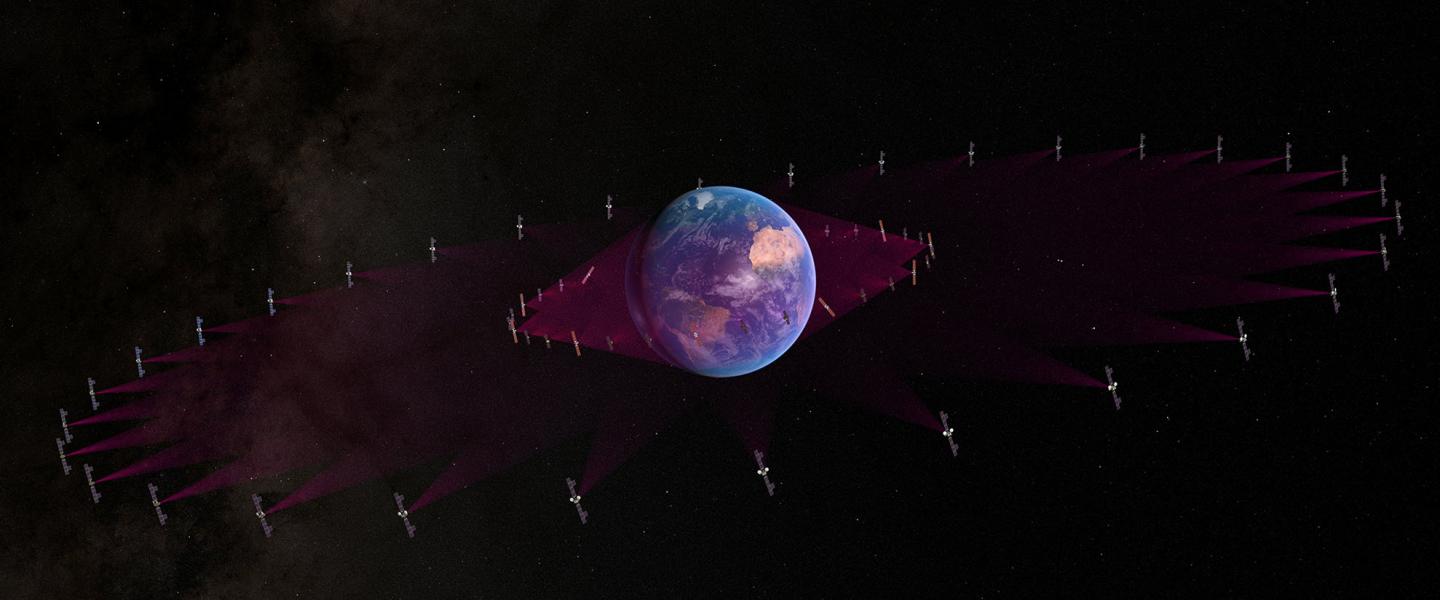Why Government Networks Need Multi-Orbit SATCOM


Government at SES Networks
Evolving governments' connectivity needs mean that boundaries of traditional SATCOM need to be pushed. Philippe Glaesener, SVP Global Government at SES Networks, shared more insights during this year’s Global MilSatCom event.
What is SES’s role within the SATCOM community?
For more than four decades, SES has been providing satellite-based services and working with governments around the world including the U.S. and key European defence institutions, as well as global supra-national organisations. The open dialogue we have with them has enabled us to understand their evolving challenges of national security, defence policies, digital sovereignty and Universal Service Obligations.
Through our multi-orbit network of high-throughput low-latency Medium Earth Orbit (MEO) and Geostationary (GEO) satellites, we are able to flexibly provide solutions that vary in coverage, throughput and latency to best support government applications. In addition, we can provide enhanced layers of security, using dedicated government capabilities as GovSat-1 (operated by the public-private venture between the Government of Luxembourg and SES) with X-band and Mil-Ka band.
From a defence and security perspective, our solutions are supporting applications for ISR, navy ships and other vehicles in motion, and communications on the pause. We enable deployed personnel in the field with connectivity wherever and whenever needed, including for reachback. By leveraging performance, reach and security of our satellite networks, we are also able to deliver cloud to the edge for in-theatre operations, bringing the advantages of Machine Learning (ML) and Artificial Intelligence (AI) to the end-user, independent of the terrestrial internet and other publicly accessible networks.
Can you tell us more about your upcoming NGSO constellation?
The fully funded O3b mPOWER constellation is currently under final construction and will start delivering service by the end of 2022. It is our second-generation communications system in MEO, an NGSO, that builds on the proven commercial success of the current O3b constellation.
O3b mPOWER will bring service virtually anywhere, bringing high-performance, scale and throughput that ranges from as low as 40 Mbps to multiple Gbps. To achieve an unprecedented service flexibility, we’ve put in place innovations in spacecraft, ground systems, intelligent software-driven network management, control and automation. For example, the capacity can be dynamically allocated where it is needed and controlled by optimising the forward and return path bandwidth, based on the government customer use case and need.
Specifically for the military SATCOM community, what capability upgrades will O3b mPOWER offer?
O3b mPOWER’s brings reach, capacity, flexibility and scale to support a whole new set of capabilities for advanced MilSatCom applications like ISR, naval, or AI-enabled cloud services.
If we use ISR as an example, today, the performance of the missions is limited by the lack of robust connectivity off unmanned aerial vehicles (UAVs). The next-generation UAVs will easily need over 100 Mbps per unit, as ISR is increasingly reliant on UAVs with higher numbers of sensors and higher resolution data requirements. The adoption of UAVs by governments globally has seen a 58% increase compared to a decade ago, and the global SATCOM in-service units will more than double by 2029 to over 10,000, as forecast by NSR. With O3b mPOWER connectivity, the users will be able to leverage not only the full suite of sensors and data – but also receive, process and potentially adjust the mission requirements mid-flight – all over a network optimised for operational efficiency, security and resilience.
Meanwhile, we also observe an increasing demand for government mobility requirements in vehicular ‘comms on the move’ and naval domains, that are driven by growing usage of cloud applications. The O3b mPOWER system will enable a whole new level of situational awareness to these missions, extending the mission reach and effectiveness.
To access the O3b mPOWER satellite connectivity, we have also invested in advanced ground terminal technologies and terrestrial network connectivity to deliver the highest quality cloud-optimised, end-to-end performance. As an extended value proposition, government customers can get enhanced levels of control over their network with the option of having dedicated gateways and ensuring resiliency of their sovereign networks.
The full version of the article was first published by SMi Group during the Global MilSatCom 2021 event:
https://www.smi-online.co.uk/defence/uk/global-milsatcom?utm_medium=www.globalmilsatcom.com&utm_source=D-270&utm_campaign=SESSpkSpon#tab_downloads




